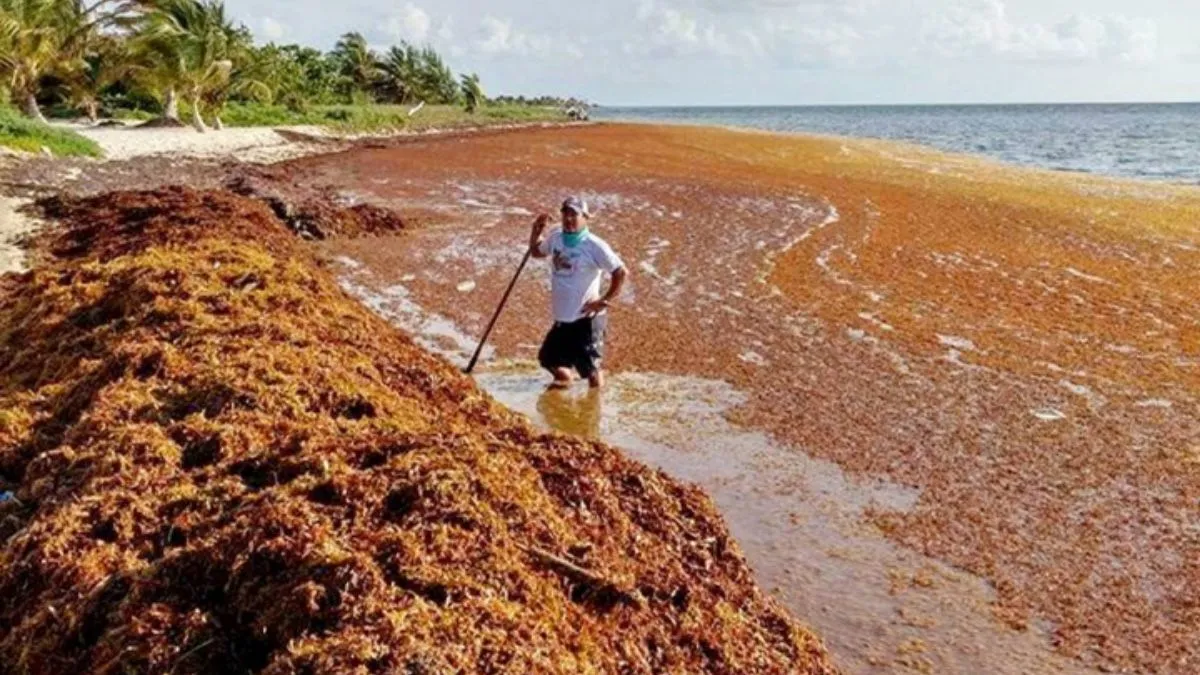- By Supratik Das
- Sat, 04 Oct 2025 06:39 PM (IST)
- Source:JND
A staggering 8,850-kilometre-long brown algae congregation, described as a "ribbon" spanning the Atlantic Ocean, has raised serious concerns among ocean scientists and coastal residents. The phenomenon, technically known as the Great Atlantic Sargassum Belt (GASB), was photographed by satellite in May 2025, showing 37.5 million tonnes of pelagic sargassum covering from the West African coastline to the Gulf of Mexico.
Previously, limited to the Sargasso Sea, a warm, nutrient-scarce area of the Atlantic, sargassum has recently grown massively over the past 15 years to become a global ecological issue. Scientists at the Harbor Branch Oceanographic Institute at Florida Atlantic University examined satellite data over four decades, chemical analyses, and field reports to determine what is behind the surge. Their research, which appears in Harmful Algae, indicates that sargassum now dominates in nutrient-rich water, driven to a large extent by nitrogen and phosphorus from terrestrial sources.
• Between 1980 and 2020, sargassum tissues increased in nitrogen content by 55 per cent.
• The ratio of nitrogen to phosphorus also increased by 50 per cent, indicating increased nutrient delivery from rivers, agricultural drainage, wastewater, and even atmospheric deposits.
The central role is played by the Amazon River, which brings nutrient-filled waters during flooding seasons that speed up the growth of the algae. Ocean currents such as the Gulf Stream and Loop Current carry these giant mats into the Gulf of Mexico, where previous strandings have already resulted in economic and ecological issues.
ALSO READ: Why NASA Locked Four Volunteers In 3D-Printed ‘Fake Mars’ Habitat For 378 Days
Ecological Benefits Vs Environmental Burden
Sargassum naturally supports marine life, providing food and habitat for over 100 species, including fish, invertebrates, and sea turtles. NOAA has identified it as an important ocean habitat.
But the unprecedented extent and density of the belt today present several threats:
• Damage to coasts: Sargassum washed ashore releases hydrogen sulfide, a foul-smelling, toxic gas.
• Economic loss: Strandings interfere with tourism, fisheries, and regional commerce; cleanup is expensive.
• Disruption to ecosystem: Dense mats are shading out sunlight, killing coral reefs and other underwater vegetation.
• Climate impact: During decomposition, methane and other greenhouse gases are released, helping to fuel climate change.
• Hazards to infrastructure: Previous occurrences have necessitated temporary shutdowns of facilities, such as a nuclear facility in Florida back in 1991.
The Great Atlantic Sargassum Belt might still expand as oceans heat up and runoff nutrients continue. Climate change, wind patterns, and ocean currents might disperse the algae even more northward, creating perhaps similar issues in newly afflicted areas. Therefore, without immediate action, the GASB might be an even bigger danger to marine ecosystems, coastal economies, and climate stability.

